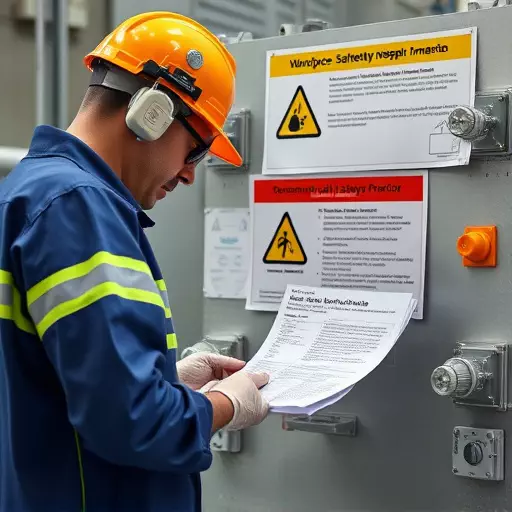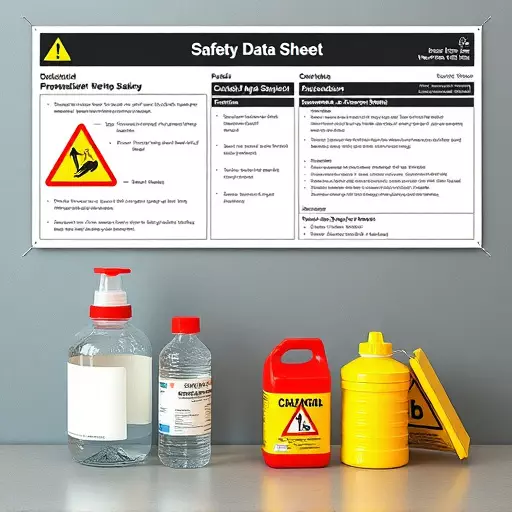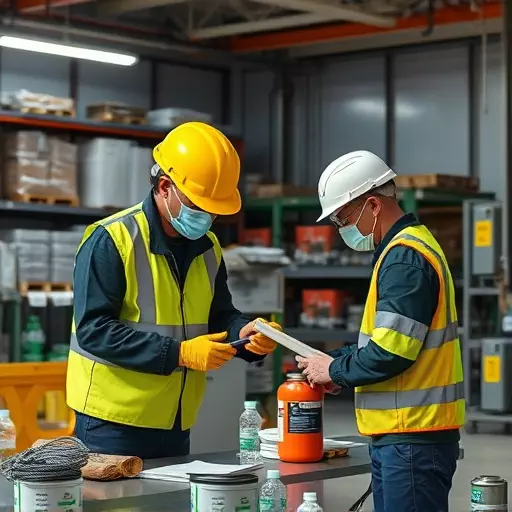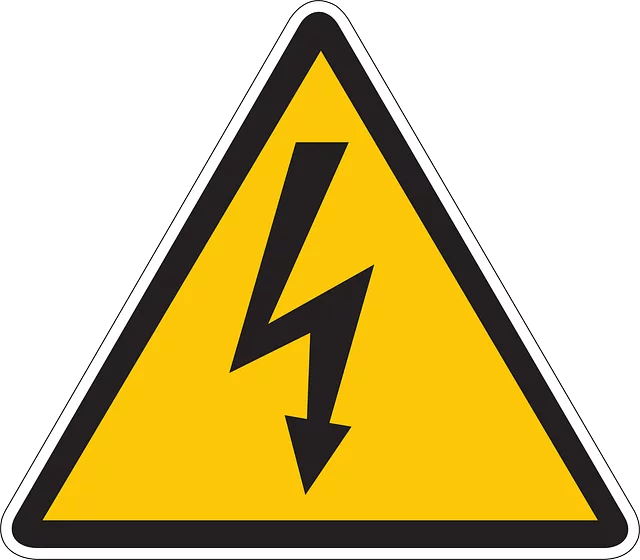OSHA workplace safety inspections are crucial for maintaining secure work environments, identifying risks, ensuring Safety Data Sheet (SDS) compliance, and promoting best practices. Technology significantly enhances these processes by streamlining SDS management, automating hazard assessments, and providing real-time data access. Digital tools reduce errors, facilitate proactive risk mitigation, and improve overall compliance tracking, ultimately leading to safer workplaces and fewer legal repercussions. Specialized software tailored for OSHA inspections and SDS compliance is essential for companies to overcome documentation challenges and stay ahead of regulatory changes. Future trends in technology, such as AI hazard prediction and IoT monitoring, promise even more efficient and effective workplace safety management.
Technology tools are revolutionizing compliance tracking, particularly within OSHA workplace safety inspections. This article delves into the crucial role of technology in streamlining hazard assessment protocols and enhancing overall safety data sheet (SDS) management. We explore various software solutions designed to simplify compliance tracking, backed by real-world case studies. Additionally, we address common challenges and provide insights into future trends, offering a comprehensive guide for navigating digital enhancements in workplace safety compliance.
- Understanding OSHA Workplace Safety Inspections and Their Importance
- The Role of Technology in Streamlining Hazard Assessment Protocols
- Digital Solutions for Efficient Safety Data Sheet (SDS) Management
- Compliance Tracking Software: Features and Benefits
- Case Studies: Successful Implementation of Tech Tools for Compliance
- Overcoming Challenges: Common Issues and Their Solutions
- Future Trends in Technology for Enhanced Safety Compliance
Understanding OSHA Workplace Safety Inspections and Their Importance

OSHA (Occupational Safety and Health Administration) workplace safety inspections are crucial for ensuring adherence to hazard assessment protocols and maintaining a safe work environment. These inspections play a vital role in identifying potential risks, evaluating compliance with safety data sheet (SDS) regulations, and promoting best practices among employers. By proactively conducting regular checks, companies can prevent accidents, protect their employees, and avoid costly legal consequences.
During an OSHA inspection, trained professionals thoroughly examine the workplace, looking for violations related to chemical storage, personal protective equipment (PPE), ergonomic design, fire safety, and more. They assess whether proper hazard assessment protocols are in place and effectively implemented. Non-compliance with these protocols can result in fines, legal action, and even severe injuries or fatalities. Staying up-to-date with OSHA standards and utilizing technology tools for compliance tracking can significantly aid organizations in meeting these regulatory requirements.
The Role of Technology in Streamlining Hazard Assessment Protocols

Technology plays a pivotal role in streamlining OSHA workplace safety inspections and hazard assessment protocols, making them more efficient and effective. Digital tools enable organizations to quickly access and update critical information, ensuring compliance with the latest safety standards. For instance, automated systems can generate comprehensive Safety Data Sheets (SDS) based on inputted chemical compositions, reducing manual effort and errors.
Additionally, advanced software platforms facilitate systematic hazard identification by analyzing historical data, real-time sensor feeds, and employee reports. This proactive approach enhances workplace safety by enabling managers to take preventative measures rather than reactive responses during inspections. As a result, organizations can mitigate risks more effectively, ensuring a safer work environment and improved compliance with OSHA regulations.
Digital Solutions for Efficient Safety Data Sheet (SDS) Management

In today’s digital era, efficient Safety Data Sheet (SDS) management is crucial for ensuring OSHA workplace safety inspections and hazard assessment protocols go smoothly. Digital solutions offer a streamlined approach to replacing traditional paper-based SDS systems. These tools allow for easy access, immediate updates, and centralized storage of critical chemical information, ensuring compliance with regulatory standards.
With digital SDS management, companies can quickly retrieve up-to-date safety profiles, facilitating informed decision-making during inspections. This technology enables efficient hazard assessment by providing quick access to detailed chemical compositions, potential risks, and necessary precautions. As a result, organizations can enhance their overall safety posture and maintain compliance with OSHA regulations.
Compliance Tracking Software: Features and Benefits

Compliance Tracking Software has become an indispensable tool for organizations aiming to maintain a safe and compliant work environment. This technology offers a range of features designed to streamline processes related to OSHA workplace safety inspections, hazard assessment protocols, and Safety Data Sheet (SDS) management. By centralizing these critical functions, companies can ensure better visibility into their compliance status, reduce the risk of costly violations, and foster a culture of continuous improvement in workplace safety.
Key benefits include automated scheduling and reminders for inspections, digital documentation of findings, and efficient storage of SDS, making it easy to access and share relevant information across departments. Moreover, these platforms often incorporate analytics and reporting capabilities, providing valuable insights into trends and areas that require further attention. This proactive approach to compliance tracking not only eases the administrative burden but also helps organizations stay ahead of regulatory requirements, ultimately contributing to a safer and more efficient workplace.
Case Studies: Successful Implementation of Tech Tools for Compliance

Many organizations have successfully leveraged technology tools to streamline compliance tracking processes, particularly in areas like OSHA workplace safety inspections and hazard assessment protocols. These case studies demonstrate how digital solutions can enhance efficiency and accuracy while reducing costs. For instance, some companies have implemented software that automates data collection during inspections, ensuring all relevant information is captured and immediately available for analysis.
In the realm of safety data sheet (SDS) compliance, tech-driven systems have proven indispensable. They enable easy access to up-to-date SDSs, facilitate their distribution to employees, and track acknowledgment of training materials. This not only ensures adherence to regulatory requirements but also fosters a culture of safety awareness among workers. These successful implementations serve as models for other businesses, underscoring the transformative potential of technology in maintaining compliance across various safety protocols.
Overcoming Challenges: Common Issues and Their Solutions

Compliance tracking in the realm of OSHA workplace safety inspections can be a complex task, presenting various challenges that organizations must navigate. One common issue is the accurate and consistent documentation of hazard assessment protocols. Many companies struggle with maintaining detailed records, especially during frequent inspections. A potential solution lies in adopting specialized software tools designed for compliance tracking. These digital platforms enable efficient data management by allowing employees to quickly input inspection findings, automatically generating comprehensive reports that streamline the entire process.
Moreover, ensuring Safety Data Sheet (SDS) compliance is another hurdle. Keeping up with the latest SDS updates and distributing them effectively can be daunting. To address this, advanced technology offers automated systems that store and update SDS databases, ensuring all employees have access to the most recent information. By integrating these tools into existing workflows, organizations can enhance their safety programs’ overall effectiveness, reducing risks and potential non-compliance penalties.
Future Trends in Technology for Enhanced Safety Compliance

The future of technology in compliance tracking is promising, especially for sectors like construction and manufacturing where OSHA workplace safety inspections are frequent. AI-driven systems can analyze vast datasets from previous inspections to predict potential hazards, enabling proactive safety measures. This predictive capability, coupled with real-time monitoring through IoT sensors, could revolutionize hazard assessment protocols.
Digital transformation in safety data sheet (SDS) management is another trend worth noting. Cloud-based platforms offer easy access and sharing of SDSs, enhancing communication among stakeholders. Integration with mobile apps allows for quick reference during inspections, ensuring adherence to safety standards. As technology evolves, these trends aim to streamline compliance processes, making them more efficient and effective while reducing the risk of accidents and injuries on the job site.


